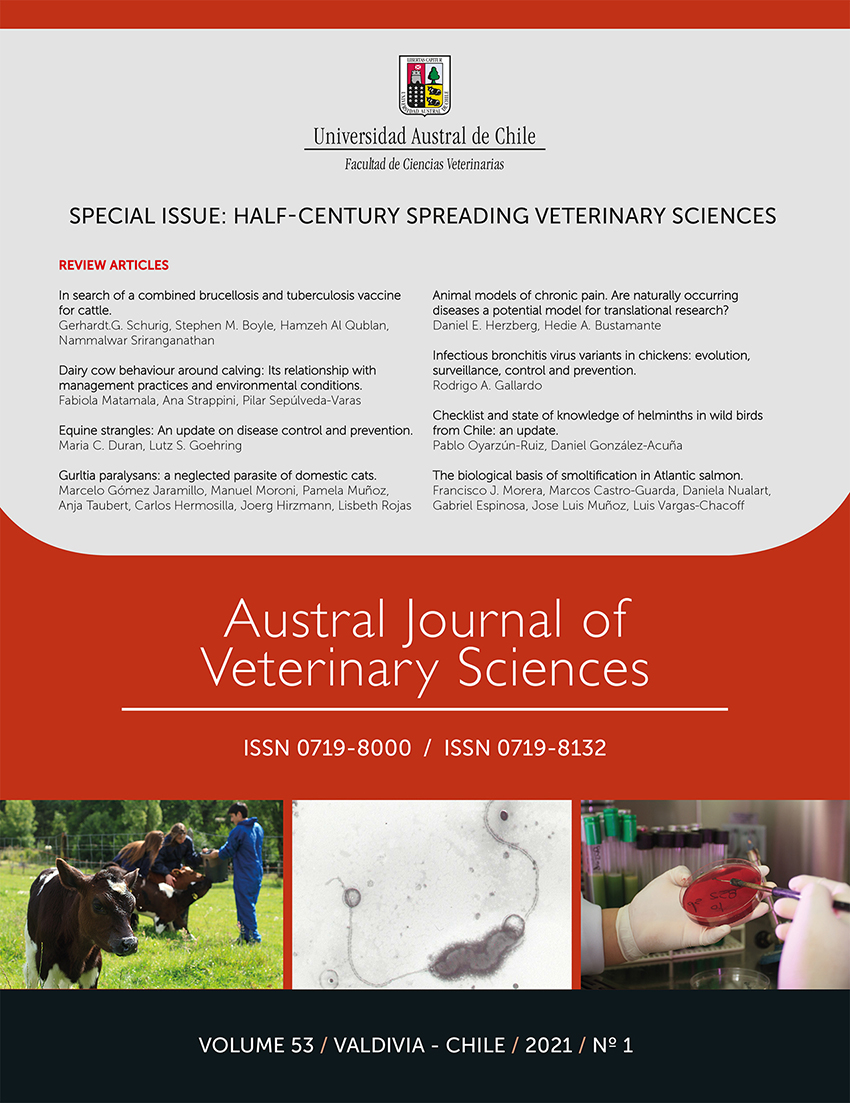Infectious bronchitis virus variants in chickens: evolution, surveillance, control and prevention
Main Article Content
Abstract
Infectious bronchitis is a disease of the upper respiratory tract of chickens caused by a Gammacoronavirus (infectious bronchitis virus, IBV). Severe economic losses are caused by IBV due to a reduction in egg production and/or egg quality in layers in addition to poor feed conversion and increased condemnations in broiler chickens. The extreme variability of this virus is in part due to its RNA genome, which predisposes it to mutations and generates genetic variation. In addition, recombination events add to the variability of this virus. IBV variability was first described in 1956 by Jungherr. Since then, dozens of serotypes and hundreds of genotypes have been reported. Variant IBV strains are those that, can escape from the immunity generated by conventional strains, despite not being ful ly different from conventional strains affecting a geographic region. At the genomic level, these differences can be equal or greater than 5% of the hypervariable region of the S1 gene. These variant strains are usually restricted to geographic regions and most of the time are transient, reason why diagnostics and epidemiological surveillance are crucial to determine their existence and persistence. The main goal of surveillance is to assist the development of efficient preventative measures in the field. This review aims to critically analyse the literature related to IBV variability and judiciously comment and discuss on howto better prevent this poultry endemic disease.

